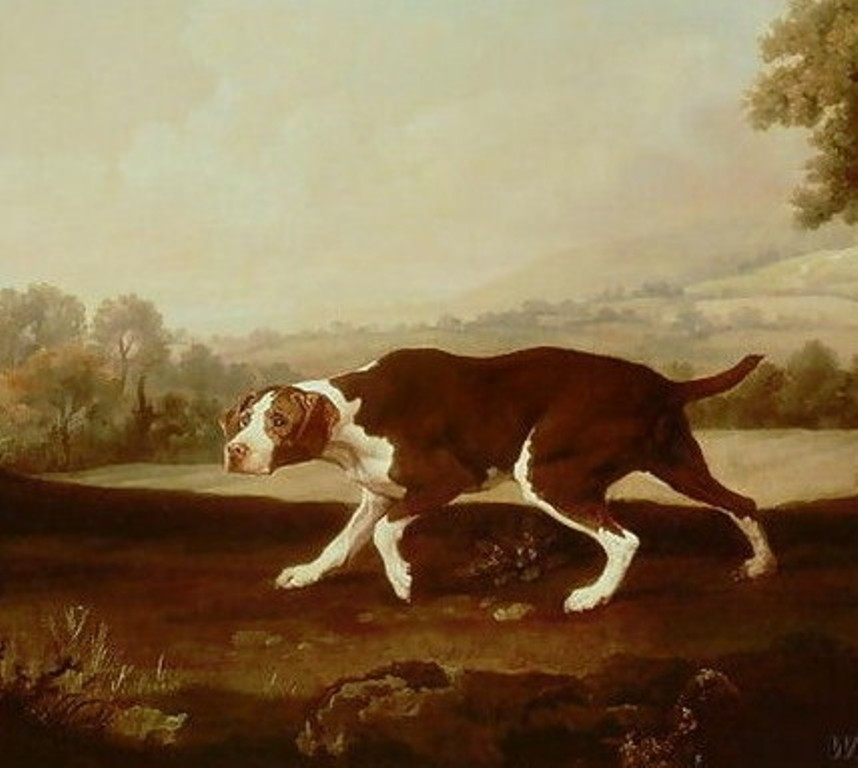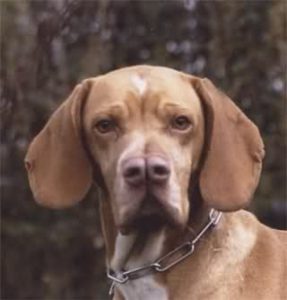
Strictly speaking, there are a few “buts” about the Old Spanish Pointer: It was the founding father of many European gun dogs, but certainly not all of them (the most prominent being the Pointer which was a result of its cross with foxhounds). Short haired pointing dogs were brought to the UK by soldiers who’d fought in the War of Spanish Succession in the mid 18th century, but, according to Craig Koshyk, there was never really a single breed called the “Spanish Pointer.” Other sources we’ve come across disagree.
The breed is old and was mentioned by Alonzo de Espinat in, “The Art of the Crossbow” written in 1644, but even before then, local oral history suggests that the breed developed on either side of the Pyrenees Mountains already existed in the 1200s. We do know that the oldest painting thought to exist about any pointer in England was painted by Peter Tillemans in 1725, and it is described as being of a Spanish Pointer.
Tillemans in 1725, and it is described as being of a Spanish Pointer.
The breed isn’t extinct, but, it does presently exist under a different name, the Pachón Navarro, the closest breed to the old “Spanish Pointer.” The Royal Canine Society of Spain recognized the Pachón Navarro in 1911.
We conclude with a flourish! The Pachon Navarro’s most distinctive feature is its nose which has alternately been described as a “split” nose, “double nose,” or, as American writer, Freeman Lloyd described, a nose that looked like the wrong end of a double barreled shotgun. Not all Pachon Navarros are born with this deep crease between the nostrils, but it’s certainly a memorable aspect of the breed, and was believed by local hunters to give the breed “super powers,” when it came to a sense of smell. We haven’t found scientific data to support the claim.
“Old Spanish Pointer” painting by George Stubbs. Image of “split nose” found on Pinterest and happily credited upon receipt of information.
